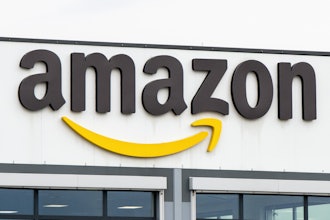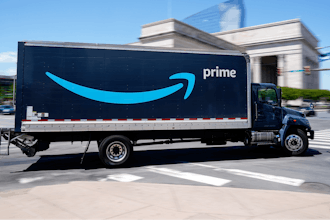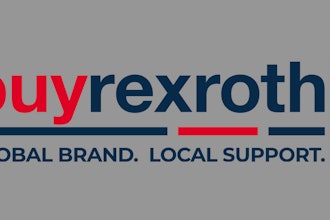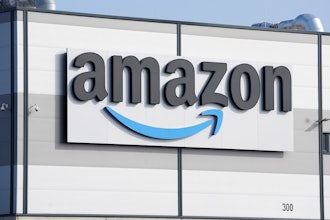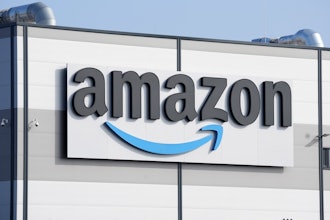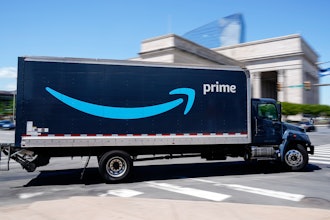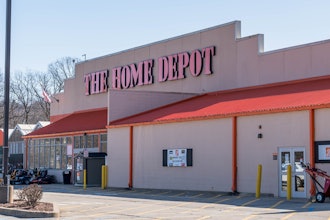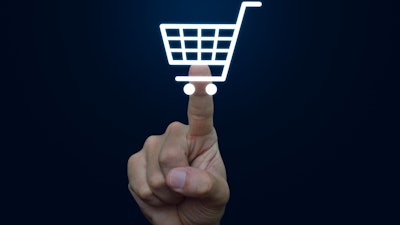
It’s been a big year for distributors. Sales, on the whole, are up substantially year-over-year as the industry puts the COVID-19 pandemic further and further in the rear-view mirror.
The robust revenue numbers have been helped by strong pricing trends amid stubborn inflation, and despite concerns about where things could be headed in coming months, the economy seems to keep humming along.
Those concerns, however, are due to some very real headwinds, from persistent supply chain snags and a war in Europe to efforts by governments to combat inflation, which could slow the economy or send it into a recession.
Distributors continue to sound a cautiously optimistic tone heading into 2023, but they’ll need to make sure they’re giving prospective customers every opportunity to find them if they’re going to continue the post-pandemic momentum. Inevitably, it seems, that means offering an online option.
In fact, distributors polled by Industrial Distribution in recent weeks pointed to the ability to reach customers as the top reason that their companies embraced e-commerce in the first place.
That’s far from the only reason, of course: many also sought out the convenience of online shopping, the cost-savings potential of a viable e-commerce operation, or the ability to find a more diverse customer base across a wide geographic area.
In this unusual era of both promise and uncertainty, ID presents its inaugural Survey of E-Commerce Operations — a look at how distributors are embracing e-commerce, the challenges they continue to face while doing so, and what to expect in the new year, based on responses to an online survey of ID readers in mid- and late October.
Many of the responses would likely be considered unsurprising, from the industry’s embrace of e-commerce as a whole to its potential benefits to distributors’ product lineups and bottom lines.
But the survey also produced some unexpected findings about distributors’ e-commerce strategies, particularly with regard to pricing strategies — and whether the current inflationary climate is playing a role in them.
How E-Commerce Is Changing Distribution
The current state of e-commerce in the distribution sector appears somewhat in conflict: most distributors are providing an online option for their customers, but e-commerce still appears to represent a small part of overall sales.
More than 80% of respondents to the ID survey said their company operates an e-commerce platform, compared to less than 20% whose companies do not, but nearly half — just under 47%, in total — also indicated that e-commerce sales accounted for less than 5% of their company’s revenue.
The bulk of the remaining responses, or nearly one-third overall, fell on the opposite side of the spectrum: 29% said online sales reflected at least 20% of their company’s revenue. Just shy of 14% said e-commerce was between 5% and 10% of revenue, while nearly 11% said the total came in between 10% and 19%.
The responses for 10-19% comprised the smallest number of total responses in ID’s survey, but that amount would evidently include two of the distribution sector’s largest companies.
Industry giant W.W. Grainger last year split its operations into two segments, one for its conventional operations, known as High-Touch Solutions North America, and one for its online sales, dubbed Endless Assortment, which comprises online platforms like Zoro and MonotaRO.
In the company’s latest fiscal quarter, Grainger sales in the Endless Assortment division eclipsed $700 million, an 8.6% increase compared to the same window in 2021 and good for nearly 18% of the distributor’s nearly $4 billion in overall quarterly sales. Grainger officials added that the number of registered Zoro and MonotaRO users was up 17% over the previous third quarter. Zoro’s portfolio stands at 10.3 million SKUs, and the company indicated that it was on track to add 2 million SKUs overall to the Zoro platform this year.
“We think that market is growing similar to what the whole market is growing,” Grainger CEO D.G. Macpherson told analysts in the company’s most recent earnings call.
Another leading distributor, meanwhile, said its e-commerce sales set a new annual record this year with more than two months to spare.
Fastenal said its online sales reached the billion-dollar mark for the first time in a calendar year by the end of October. Company executives noted that although Fastenal first launched an e-commerce platform more than two decades ago, the company changed its online sales approach five years ago to increase its focus on technology and service programs. The company subsequently saw its e-commerce sales grow from $245 million in 2017 to more than $1 billion – and counting – this year.
As a share of Fastenal’s overall sales, e-commerce jumped from 5.5% to 17.4% over that span; in October, it approached 20%.
“We have really, I believe, found a way to make this part of our business,” Fastenal President and CEO Dan Florness told analysts during the company’s third-quarter earnings call. “In the quarter, we hit $5 million a day going through e-commerce, and it wasn’t too many years ago that we were starting out in that journey.”
The Perks of Selling Online
Distributors’ bullishness on e-commerce comes amid an interesting time in the overall online marketplace.
E-commerce in the business-to-consumer sector, of course, seemed to gain more and more steam with each passing year until 2020, when the pandemic prompted consumers suddenly relegated to their homes to turn to online purchases for essential goods, welcome diversions from the outside world, or both.
E-commerce retailers, particularly industry giant Amazon, are now feeling the effects of consumers pulling back on that spending as they are able to gather in public once again — not to mention at a time of rising inflation.
Online shopping in the business-to-business sector can offer companies the same type of convenience experienced by consumers, but it also offers unique advantages to distributors — and the sector hasn’t seen the same kind of pullback.
The vast majority of ID survey participants – 85% – cited the ability to reach customers as one of the reasons their company embraced e-commerce.
One respondent wrote that e-commerce allows their company to meet demand where customers increasingly “want to research, and shop for, products.” Others indicated that it was a matter of simply, “Keeping up with the Joneses,” since, “More and more buyers are going that way.”
Nearly two-thirds of respondents cited convenience, while just shy of half pointed to cost savings, a larger geographic reach, and a more diverse customer base.
Sixty-four percent also indicated that e-commerce allowed their company to add more products overall. One participant noted that e-commerce effectively allowed for the immediate launch of new products.
“Necessary to compete in the marketplace now,” another respondent wrote.
What’s Staying the Same
E-commerce is forcing distributors to re-evaluate how they approach their customers, but most respondents to ID’s survey indicated that it isn’t impacting some key facets of their businesses as much as might be expected.
Despite the ability of e-commerce to allow customers to interact directly with a distributor, 80% of poll participants said that e-commerce has not impacted the size of its sales staff. Just 9% said their sales department had declined, while a slightly higher amount – 11% – said their companies had actually added more sales representatives due to online transactions.
And although many companies cited cost savings as a reason to turn to e-commerce, 72% of respondents said e-commerce has not affected their respective pricing strategies. An even larger share – 77% – said price inflation has not altered how their companies have approached e-commerce.
“While not a primary reason for implementing an e-commerce platform, higher inflation has moved up the timetable to begin implementation,” one respondent wrote.
Just 8% identified price variability concerns as a reason to bolster their online sales options, and only 16% said price transparency was a challenge to its e-commerce strategy.
One participant wrote that the ability to instantly update prices helps their company “remain competitive in [the] marketplace.” Others pointed to more flexibility to “implement price levels by customer type” or offer “incentives for customers that place orders online.”
Some respondents, meanwhile, differed on how e-commerce affected their company’s profitability.
“Since a layer gets removed,” one contended, “there is more margin on these sales.”
Another, however, countered that because search engines are increasingly displaying pricing from more and more online distribution options, the result is, in fact, “lower margins.”
Biggest Challenges
While distributors overwhelmingly pointed to customer reach and convenience as the top reasons to turn to e-commerce, respondents to ID’s poll were much more varied about the challenges they face making it happen.
The top issues identified in the survey were the setup or integration of information technology systems and driving traffic to their websites, both at just shy of 60%.
No other issue topped the 50% threshold: shifting the focus of company sales representatives lagged in third at 42%, followed by the ability to provide details regarding distributor value at 37%, maintaining a seamless omni-channel experience at 34%, and the costs of moving online at less than 20%.
Complaints regarding IT issues are likely a common refrain across most, if not all, online operations, but for distributors worried about how their new e-commerce platform will fare in the vast expanse of the internet, a couple of strategies could help.
“For new customer acquisition, search engine marketing is the most effective way to attract customers to a B2B website,” said Bob DeStefano, a business-to-business digital marketing strategist and the president of SVM E-Marketing Solutions. “There are two primary SEM tactics companies can leverage: search engine optimization and pay-per-click advertising.”
What’s commonly known as “SEO” seeks to push websites toward the top of results on search engines, often using words or phrases optimized for search algorithms. DeStefano said that in addition to using those words in product names and descriptions, distributors should deploy unique images, videos and educational content.
Pay-per-click, meanwhile, allows companies to list their webpage or products in search results, then pay whenever a user visits their website from those ads. DeStefano said that although PPC can ensure distributors get their products in front of consumers, the use of web and call analytics can help ensure that those views are translating into sales.
Whichever strategy distributors pick, DeStefano warned against the common temptation of trying to grow too large, too fast with e-commerce operations.
“Some regional distributors think their e-commerce site should turn them into a national player,” he said. “While this is possible, a better strategy is to focus on growing their existing footprint in their territory.”
What’s Ahead
Distributors described a wide variety of reasons to pursue e-commerce in ID’s survey – as well as a broad range of challenges that they faced in doing so – but they were united on one issue: e-commerce shows no signs of slowing down.
Asked about their companies’ share of e-commerce sales, respondents were split between those whose sales are up this year – 51.5% – and those who said the number was about the same as last year, at 48.5%. Not one survey participant said e-commerce sales would account for less of the company’s total sales in the current calendar year.
They also expect the same next year, despite concerns about how the global economy will fare amid inflation and efforts by central governments to rein it in. Eighty-three percent of participants said they expect e-commerce sales to rise in 2023.
The optimism comes amid meteoric growth in overall business-to-business e-commerce sales over the past five years. Data from the U.S. Department of Commerce and Digital Commerce 360 projects that B2B e-commerce will more than double over that span — from some $640 billion in 2017 to $1.4 trillion this year. E-commerce’s share of total U.S. distributor sales, meanwhile, is slated to increase from 11.5% to 17.5%.
MacPherson – Grainger’s chief executive – said earlier this year that he expects to roughly double the portfolio of the company’s Zoro platform over the next four to five years, and move the division’s profit margins into “the high single-digits over the next several years.”
He said that he sees the e-commerce segment on “a very good path” — recession or not.
“We would expect the underlying growth to be able to sort of power through the downturn,” MacPherson told analysts in July. “We would be affected by the downturn, but we still think we’d have significant outgrowth from the Zoro model.”











